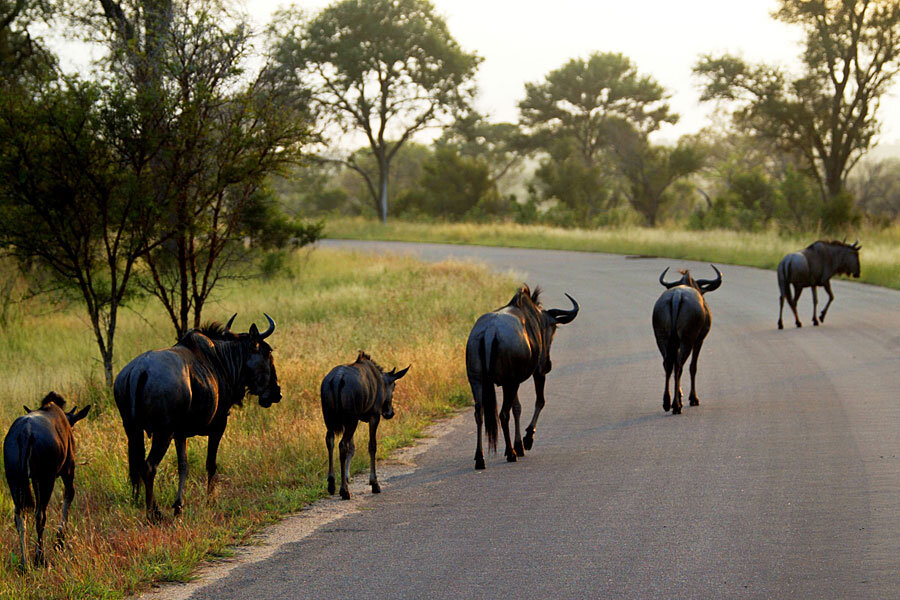Wildebeest attack prompts calls from gnu-control advocates
A worker at a North Carolina zoo suddenly found herself trying to fend off an irate wildebeest last week in an attack that left her hospitalized.
WSOC, an ABC-affiliated television station in Charlotte, reports that the staff at Zootastic Park in Troutman, N.C., were taking schoolchildren through the park in a wagon on Oct. 27. One mother arrived late with her children, so the staffers radioed Kimberly Hillman, a bookkeeper at the zoo, and asked her to drive them to the wagon where they could join the rest of the group.
When Ms. Hillman exited the car with the mother and children, a wildebeest approached. Hillman made a shooing gesture, which the huge antelope apparently took it the wrong way.
“It hit her, threw her up in the air. She hit (the) ground, it picked her up again and threw her up in the air, and I was getting off the tractor at the time and I ran and got between her and the wildebeest,” Zootastic owner Scottie Brown told WOSC.
The station reports that Hillman spent about a week in the hospital before being released.
Brown told WOSC that in future the zoo will more strictly enforce its existing policy of prohibiting anyone from being outside a vehicle while in the park.
Both species of wildebeest are native to Africa. The larger of the two, the blue wildebeest, is native to the southern and eastern parts of the continent. The smaller one, the black wildebeest, is limited to South Africa.
Attacks on humans by zoo animals are rare. When one does happen, it's almost always when a visitor or staffer enters the animals' enclosures. Last month, a 3-year-old boy at an Arkansas zoo tumbled into a jaguar exhibit, where he was bitten by the big cats before the child's father and grandfather frightened them away by throwing objects at them.
Zootastic is not currently listed among the institutions accredited by the Association of Zoos and Aquariums, which accredits permanent animal exhibits according to safety and welfare standards stricter than those required by law.
The AZA's accreditation requirements state that "animals which pose a serious threat of catastrophic injury," a category that includes as "large hoofstock," "must be equipped with appropriate alarm systems, and/or have protocols and procedures in place which will notify staff in the event of a bite injury, attack, or escape from the enclosure." The organization also requires annual live-action drills for injuries, escapes, and other emergencies.
According to the AZA, fewer than 10 percent of the 2,800 animal exhibitors licensed by the United States Department of Agriculture are accredited.









